Documentation and archiving
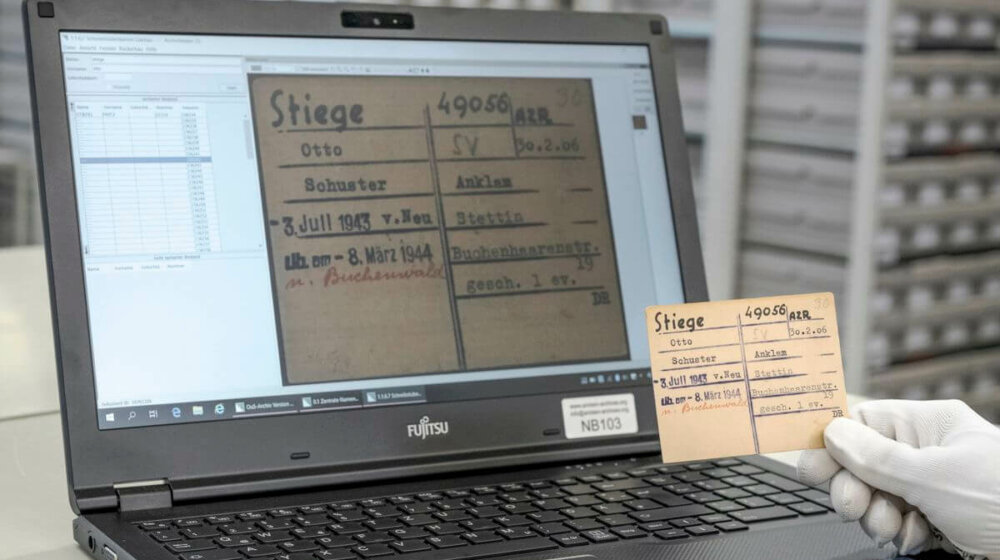
For many decades, the staff of the Arolsen Archives used the original documents from the Nazi period on a daily basis as they worked to document Nazi persecution and trace missing persons. Today, these huge collections constitute an archive of great historical value, which keeps the memory of the victims of persecution alive. The team at the Arolsen Archives now face the task of protecting the documents and preserving them for future generations. This involves digitization, conservation, keywording and thorough archival description to make them more usable for a wide range of purposes, including historical research, education and answering inquiries as well searches in the online archive.
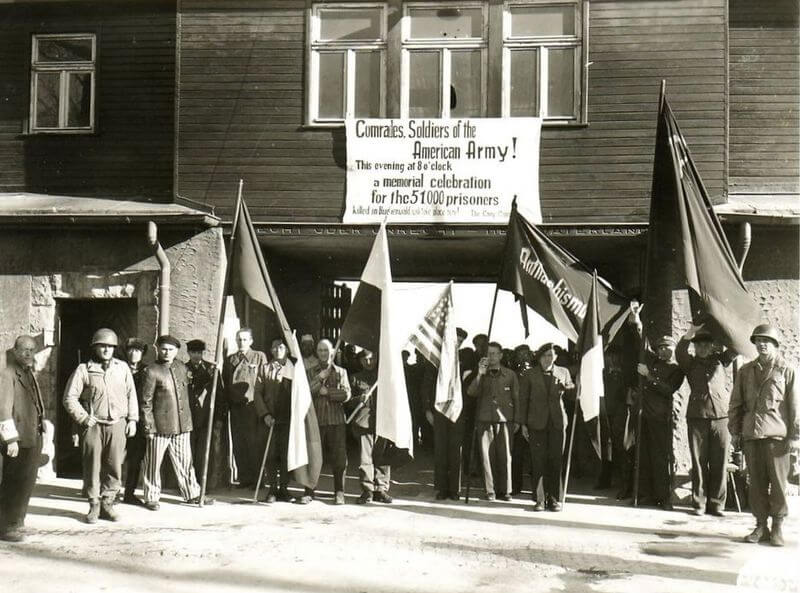
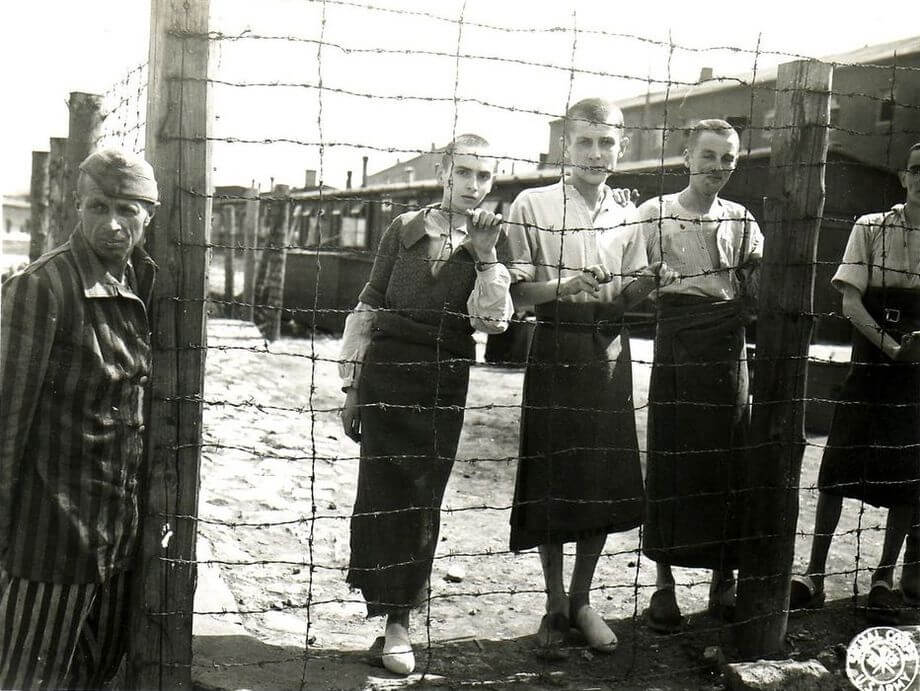
Photographers from the US Army Signal Corps began to document conditions at the Buchenwald concentration camp just days after it was liberated. 28 of the photographs taken between 21 and 24 April 1945 were used as evidence in the major war criminals’ trial which was held in Nuremberg shortly afterwards.
Between 1933 and 1945, millions of people were abducted and murdered under National Socialist rule. The most comprehensive archive on the victims of Nazi persecution was established in Arolsen to trace missing persons and clarify their fates. It includes over 30 million files, index cards and lists concerning victims of the Holocaust and concentration camp prisoners, foreign forced laborers and survivors. The Central Name Index alone consists of over 50 million cards. Over three million case files contain correspondence on individual victims of National Socialist persecution. The original holdings are part of the world’s documentary heritage and were inscribed on the UNESCO “Memory of the World” register in 2013.

»We must never forget that the documents on deposit in Bad Arolsen are a sacred memorial held in trust to honor the memories of the millions of victims of the Holocaust and other Nazi atrocities.«
Thomas Buergenthal, survivor
The collections of the Arolsen Archives focus on three main themes: information on incarceration can be found in the documentary holdings on concentration and extermination camps, ghettos and Gestapo prisons. A range of documents including meticulously kept employment records and registration cards provide detailed information on the fates of the forced laborers. There is also an extensive collection of documents on the liberated survivors, whom the Allies referred to as Displaced Persons.
Take a virtual tour of our archives to see the enormous collection for yourself:
How did the documents come to be in the archive?
In 1948, when the institution was founded under the name International Tracing Service (ITS), the staff had only a few original documents at their disposal to help them in their work. However, this was soon to change.
In order to document the death marches which many concentration camp prisoners were sent on during the last weeks of the war, the ITS sent questionnaires out to thousands of local authorities and former prisoners. This collection of investigative documents and a similar collection containing thousands of questionnaires in which former prisoners provided information about little known detention centers were among the first documents held in Arolsen.
As a result of the closure of the zonal tracing bureaus at the beginning of the 1950’s, a number of particularly valuable collections came to Arolsen, including documents which the Allies and survivors managed to save from Buchenwald, Dachau, Mauthausen and other concentration camps. There were also hundreds of thousands of lists concerning foreign forced laborers as well as registration documents for forced laborers. Eventually, at the end of 1952, over 30 tons of Allied DP documents found their way to Arolsen.
However, the holdings do not consist of original documents alone, millions of copies were also integrated into the archive. In some cases, only the copies have survived, the originals no longer exist. In order to be better able to provide former forced laborers and Holocaust victims from Central and Eastern Europe with information, staff traveled through Europe and copied millions of original documents in the period after 1990.
Another important collection consists of the so-called correspondence files of the Arolsen Archives. These files contain the correspondence between the institution and the people who submit inquiries. Inquiries also frequently came from legal representatives or official authorities. The sometimes very personal accounts recorded by victims of Nazi persecution and their families bear witness to the consequences of Nazi history up to the present day. Over the past decades, these personal accounts have become valuable historical documents themselves, because they contain information on victims of Nazi persecution about whom no other records survive.
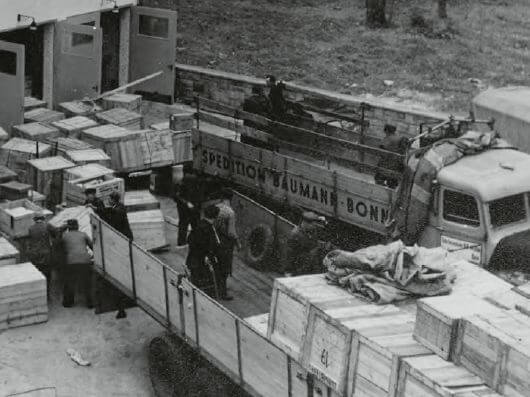
DP documents are delivered to the new ITS building, Arolsen, 1952
Do you have any questions related to archiving? Or are you looking for someone to discuss ideas for cooperative projects or events with? For questions concerning other matters, such as permission to publish, please use our contact form .

Digitization: preserving the documents for the future
In 1998, staff started to digitize the documents in Bad Arolsen. Today, 85 to 90 percent of the holdings have already been scanned – a quota that can only be matched by a small number of other archives. Not only do digital documents and processes help speed up the process of answering inquiries, they also provide much better access to the documents, whether in the reading rooms in Bad Arolsen, on the premises of selected partner institutions, or in our online archive.
»The ongoing digitization of documents and testimonies helps people gain faster access to the archive holdings – and thus fulfils the growing need to know everything in detail about their own history and the details of the events of the Nazi period and the Holocaust.«
Joël J. Cahen, historian, curator and former director of the Jewish Historical Museum in Amsterdam and founder of the National Holocaust Museum of The Netherlands.
At the same time, digitization also helps to preserve the collection. The fragile original documents are only used in exceptional circumstances and harmful metal is removed during the scanning process before the documents are repackaged. Loose sheets, questionnaires, index cards and bound books in various formats must be scanned as gently as possible during digitization. The Arolsen Archives have special scanning stations for this purpose.
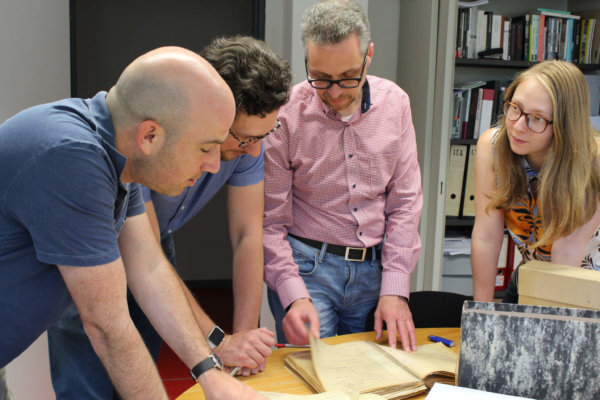
Archival description
How can we adapt the information in our archival descriptions to meet modern research requirements? Which documents meet the needs of academics who want to research the death marches? And what information is required by the users of the online archive, who are often neither historians nor archivists? These are the type of questions which the “Archival Description” team at the Arolsen Archives deal with. These historians and archivists are working hard on explaining all the documents in the context of their origin .

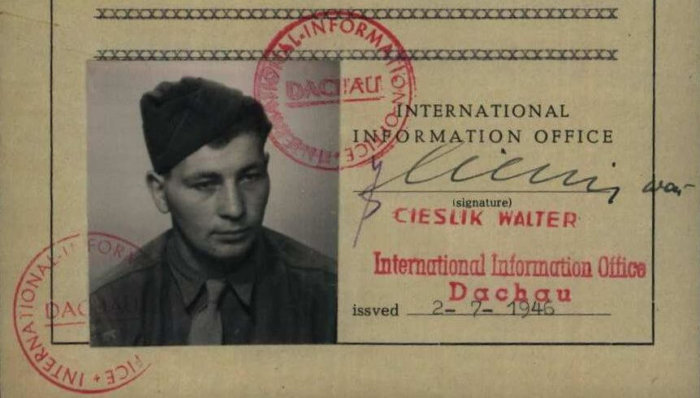
Archival description of a unique collection
The photo card file of the Dachau International Prisoners‘ Committee contains about 2000 photos of survivors – and gives faces to the fates of former prisoners like the young forced laborer and concentration camp inmate Stanislaw Galka (left) or Elias Karl Fridman (bottom) who was taken into custody a number of times. The card was created in 1945, when the victims of the Nazis needed certificates of imprisonment in order to receive support from relief organizations. The Arolsen Archives have digitized and indexed these photos, making it possible to search the database for names and dates of birth.
A huge project: creating a digital record of all the names and all the information
Because of the ongoing work we do in connection with tracing and documentation, names are still an important key to the holdings of the Arolsen Archives. Each and every individual document was and is evaluated appropriately and this indexing provides researchers with interesting perspectives for their work. However, journalists, academics and educators are also interested in overriding themes, specific places, nationalities or victim groups. This is why we now record all the informational content of a document which could be of use for the purposes of tracing, documentation, research or education.
However, it takes a long time to record this information retrospectively and considering the millions of documents involved, it really is a huge task. To support and complement the work carried out on site by our own staff, we cooperate with various partners who process selected holdings for us. OCR methods of text recognition are applied whenever possible. Projects carried out by private companies like the genealogical portal Ancestry also contribute to making it quick and easy to search as many documents as possible. In 2019, Ancestry processed DP passenger lists as well as a very large collection of Allied documents on former persecutes, making them easily searchable in the online archive. In 2020, we plan to launch crowdsourcing projects which will give volunteers the opportunity to assist us in capturing the data. Not only does this help us, it also gives schools and other institutions the opportunity to learn about the fates of victims of Nazi persecution by participating actively in remembering them in a way which is meaningful for society as a whole.
Conserving the world’s documentary heritage
Before they were digitized, the documents in the Arolsen Archives were working materials which were handled on a regular basis. They were used for research purposes and were copied, packed and unpacked repeatedly—and all of this took its toll. As a result, one of our central tasks is to restore the documents, some of which have been subject to a great deal of wear and tear, in order to protect this part of the world's documentary heritage as recognized by UNESCO.
A number of important steps have already been taken. More than 6 million documents have been de-acidified and significant progress has been made on providing proper archival packaging. The “damage register” is another important milestone. It defines how urgently which documents are to be protected against further deterioration and serves as the basis for raising additional funds for preservation and conservation of the holdings. In these times of tight budgets, the Arolsen Archives are dependent on additional funding. The special program for the preservation of the written heritage is particularly helpful in this respect. It is thanks to this program, which is run by the Federal Government Commissioner for Culture and the Media and the Cultural Foundation of the Federal States of Germany, that we have been able to carry out much needed restoration and de-acidification over the past few years.
Winning the race against deterioration: de-acidification
The de-acidification of paper is a common method used by archives and libraries for the conservation of their holdings. There are a number of different procedures. Conservators can carry out mass de-acidification by placing large quantities of documents in a bath of non-aqueous solvents, for example. These neutralize the harmful acids which paper often used to contain as a result of industrial production methods. After chemical treatment, the paper remains tear-resistant for longer and the formation of damaging substances is reduced.
Three months for 301,000 documents
The care and maintenance files from Austrian camps for displaced persons (DPs) are a good illustration of how the document restoration process works. These files date back to the period between 1947 and 1952 and include a lot of photos of the DPs. The Arolsen Archives do not have their own restoration workshop, but work with external experts.
-
 The care and maintenance files are kept in envelopes that have to be cut open before deaicidification.
The care and maintenance files are kept in envelopes that have to be cut open before deaicidification. -
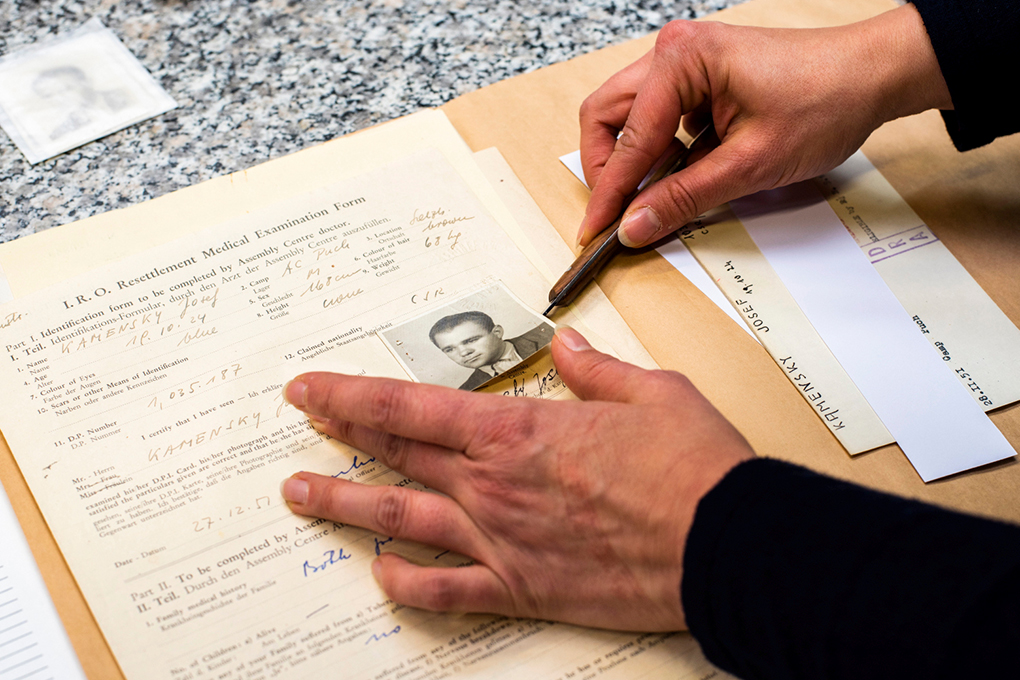 The conservators use razors to remove the photos from the so-called CM/1 files.
The conservators use razors to remove the photos from the so-called CM/1 files. -
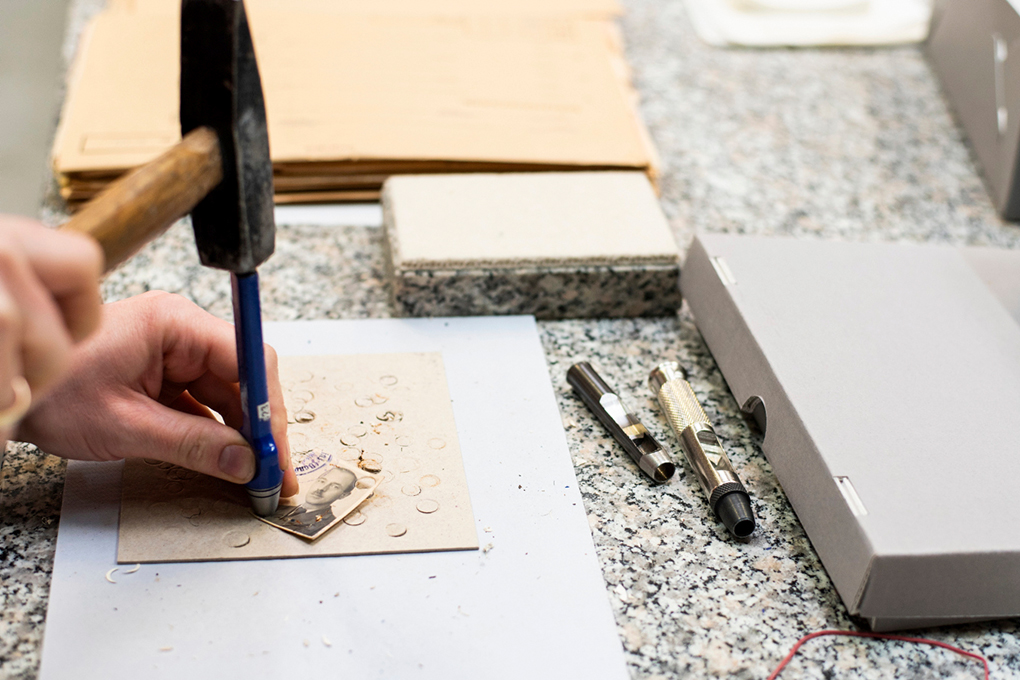 For the duration of the treatment, riveted photos are removed from the paper with a small striking tool.
For the duration of the treatment, riveted photos are removed from the paper with a small striking tool. -
 After the mass deacidification process, the conservators smooth and dry the documents.
After the mass deacidification process, the conservators smooth and dry the documents.

